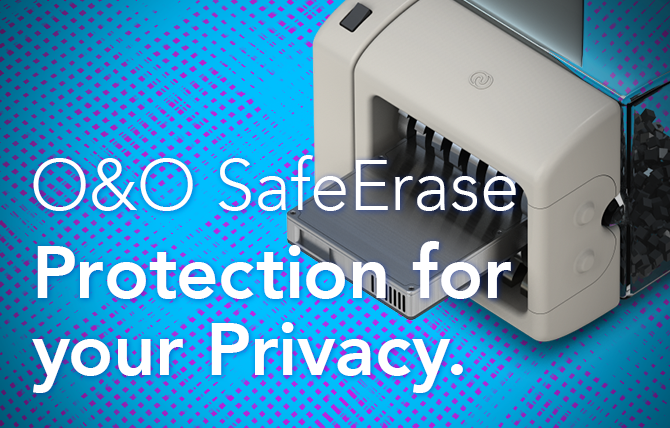When delete does not mean deleted…
When you delete a file on a Windows operating system, you might think that it’s gone forever. However, that’s not entirely true. Even if you press the delete button, the data still exists on your disk. This is because the Windows operating system simply marks the space occupied by the file as available for use. Until the space is overwritten by new data, the old file can be recovered using special software.
This may not seem like a big deal, but it can have serious consequences. If you’re selling or giving away a computer, for example, you might think that deleting all your files is enough to protect your personal information. However, someone with the right skills and tools could easily recover your deleted files and access your sensitive data.
A major problem for both individuals and businesses
The problem is not just limited to individual users. Companies that handle sensitive information also need to take extra precautions when getting rid of old computers or hard drives. They may be legally required to protect the privacy of their customers, employees, or partners. Even a single data breach can lead to financial losses, legal disputes, and damage to reputation.
So what should I do?
So, what can you do to securely erase data from a disk? The answer is to use specialized software that overwrites the data multiple times. This process is called data wiping or data erasure. It ensures that the data is not recoverable, even by using advanced recovery techniques.
It works by overwriting the data on the disk with random or predefined patterns. The more times the data is overwritten, the less likely it is to be recoverable. The software should support various wiping methods, including the U.S. Department of Defense (DoD) 5220.22-M standard, which overwrites the data seven times. It should also be able to wipe the entire disk, including the free space, to prevent any traces of data from being left behind.
Also vital would be the Gutmann method, which overwrites the data 35 times with different patterns. Scheduling and reporting are also features you may need to comply with regulations and to be safe. Just make sure that the software you choose is reputable and reliable. You don’t want to accidentally erase important data or cause any damage to your system.
Conclusion
In conclusion, pressing delete in a Windows operating system is not enough to fully erase data from a disk. The data still exists on the disk until it’s overwritten by new data. This can pose a serious risk to privacy and security, especially for individuals and companies that handle sensitive information. To securely erase data from a disk, you need to use specialized software that overwrites the data multiple times. This process is called data wiping or data erasure.
Click below to test or purchase our professional-grade deletion Software O&O SafeErase – and please don’t take any risks with your private data!
